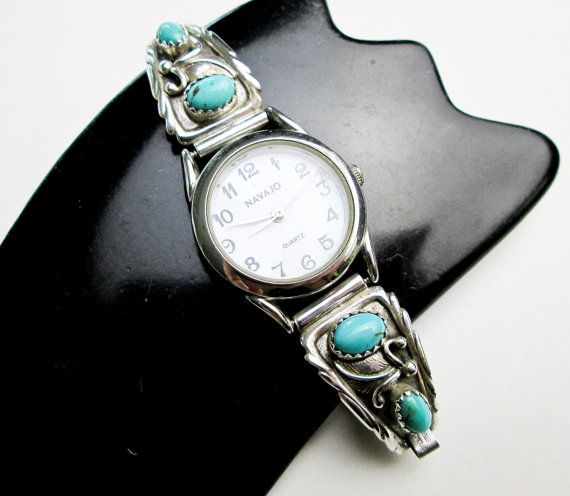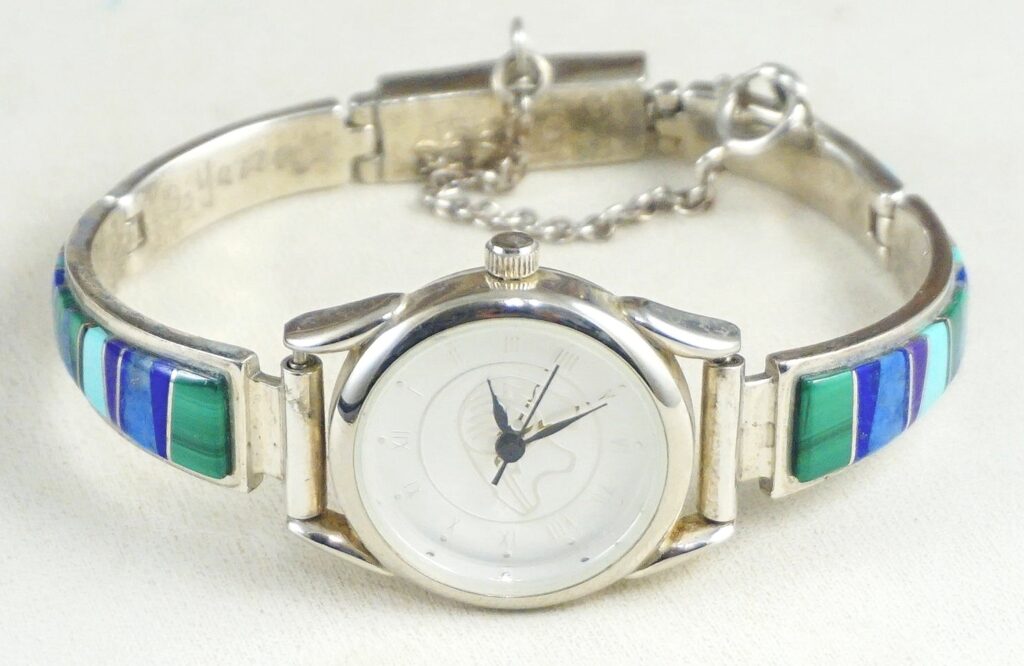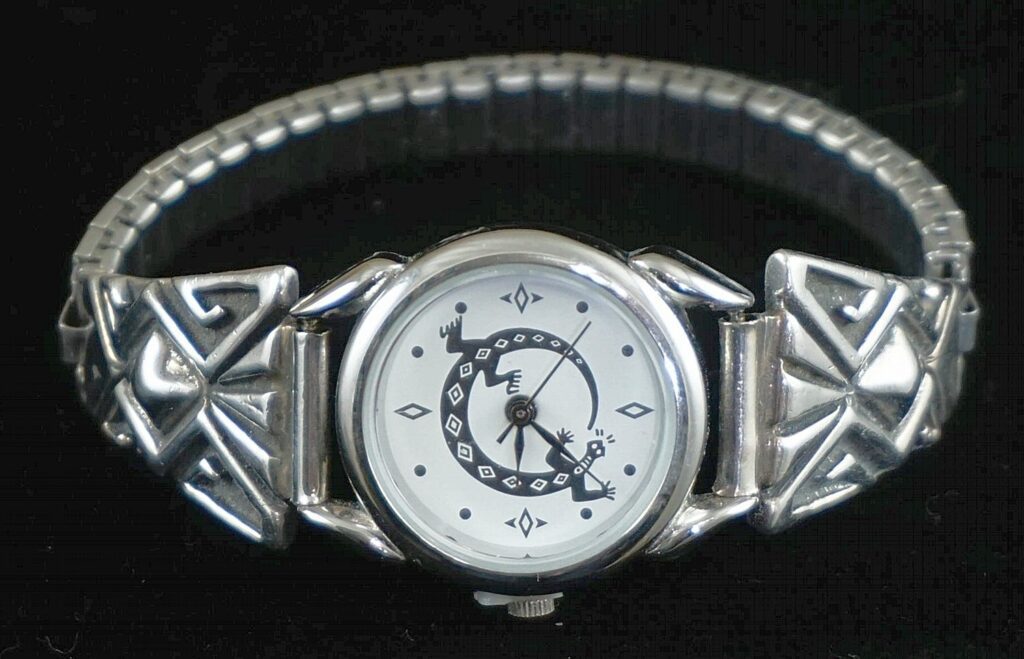Native American Art and Watches
In timekeeping, there’s a uniquely American style of wristwatch—the “Southwest” style watch. These timepieces are predicated on a rich history of Native American jewelry-making that predates European influence by millennia. Typically featuring polished turquoise stones and a worked-silver cuff band, these timepieces hold a special fascination to their owners—either for historical reasons, cultural significance, or simply for their stylish indication of their Old West origins. Though all of the history that comes packed into these watches is deserving of its own encyclopedic collection, let’s have a look—more specifically—at the Southwest watch design and some of its origins.
Ancient Beginnings

Modern archaeological finds show that Southwest Native American design dates as far back as 8800BCE. Drilled and shaped by hand, these Paleoamerican-made stone and shell pendants were as multicolored as their more contemporary counterparts. As far back as 6000BCE, Olivella shell beads were being crafted by native peoples in what is now known as Nevada. These techniques in shell-shaping and lapidary practice would continue to grow, and become more perfected, well into the years of the modern watch—plethora centuries later.
Speaking of perfected technique, one particular standout of these ancient designs was the Heishi necklace. The name “Heishi” meaning “shell” is based off of an old Santo Domingo word. These ancient necklaces weren’t always made with shells, however. They could also be made from coral and turquoise—the latter of these two materials being a common feature of Southwest design. Indeed, turquoise is a big star of contemporary Southwest design, but it wasn’t until the 19th century that this stone met its most influential metallic match.
Silverwork and the Navajo

The push toward current Southwest design, regarding what would eventually become the Southwest watch, began with European impacts on trade and design. In the early 19th century, Spanish influence was massive in Mexico. Politics and other historical nuance aside, this brought silversmithing to North America. From Mexico, tradesmen taught the people of the Navajo (or Diné) how to work silver for crafting purposes. As the first Southwest people to learn the trade, they dominated—and still dominate—silverwork in the American Southwest. Initially learning silversmithing in the 1850s, the Navajo came to teach the Zuni—who then taught the Hopi—this lucrative new trade. By 1890, the Navajo first began decorating their worked silver with in-lays of turquoise. As time moved into the 20th century, turquoise became more and more available—cementing it as a staple in Southwest design.
20th Century and Onward
In the early 1900s, the wristwatch was in its early stages of development. As the popularity of these timepieces increased, Southwest Native American craftsmen and women began plying their trade in more horological ways. Although the watches themselves were not designed by the silversmiths, the featured timepieces on Southwest bands were bestowed a fresh look—a much more vibrant aesthetic compared to the leather straps that were typical during this time. By 1940, the practice of setting timepieces into worked-silver bands became more common. With the advent of quartz timekeeping in the mid-20th century, the Southwest style watch became a bold way to display one’s love for Native American artwork while staying dialed-in to the time.

In today’s practice, silver is often replaced by steel in terms of metalwork on Southwest watches—due to the higher cost of silver. However, the stonework, shape, and overall design of Southwest watches has not changed much (if at all) into the 21st century. With modern machinery, people of the Navajo, as well as other Native peoples, don’t have to do as much handcrafting as their older ancestors. This convenience makes selling these timeless pieces easier than ever, and has helped in reinforcing their popularity in North America. To close: American traditions in hand-crafting started out with the jewelry of native peoples. These indigenous designs, with the influence of European expansion/technology, have had a lasting influence on how the American Southwest—and America at-large—views itself today. So, whether one comes across a more modern steel counterpart—with a quartz movement, or an old silver-band mechanical wristwatch, they can always appreciate the history and beauty of this lasting tradition in cross-cultural design.
Times Ticking has been in operation for more than 30 years, since 1982. We have performed watch repair for customers both locally and internationally. If it Ticks! We KNOW it! Our team of watch repair technicians have a combined experience in watchmaking of over 120 years.

